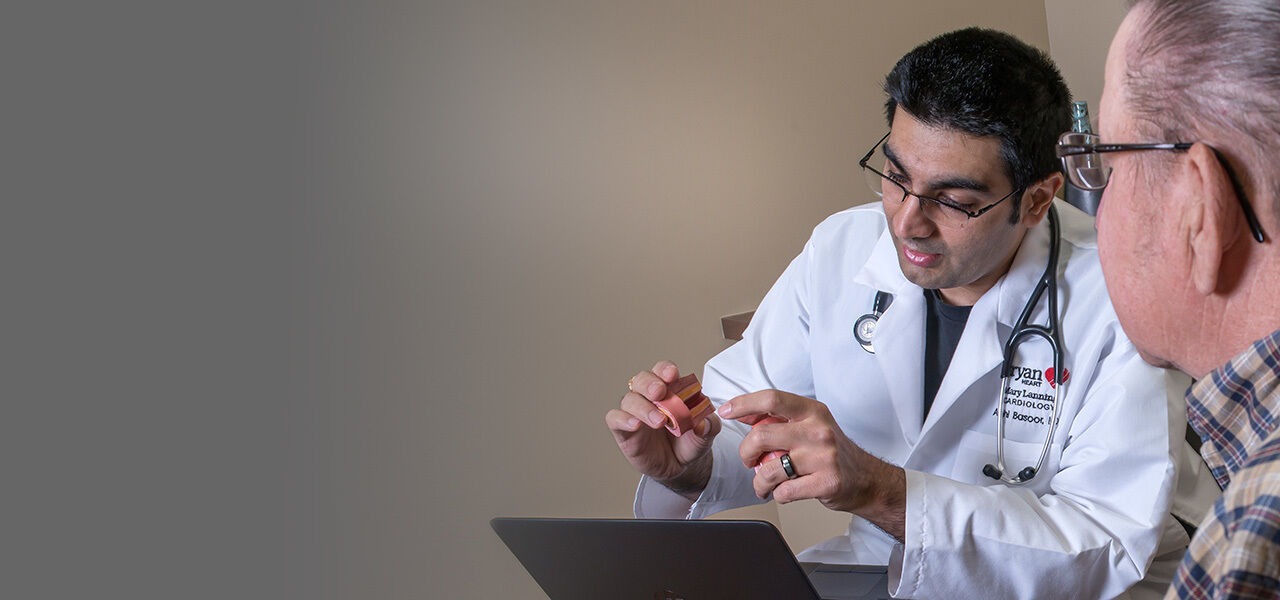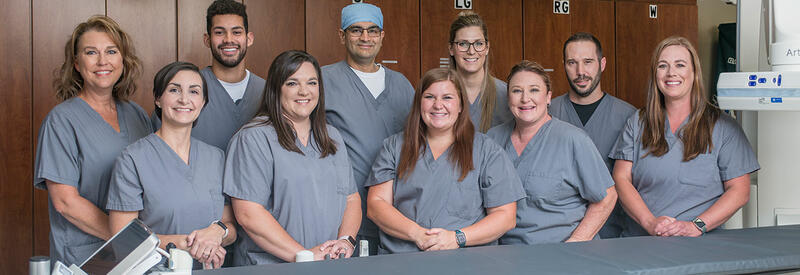

Cath Lab Procedures

Cardiac Catheterization
Also referred to as cardiac cath or heart cath, cardiac catheterization is a procedure that examines how well your heart is working. It allows your cardiologist to determine if you have disease of the heart muscle, valves, or coronary (heart) arteries. During the procedure, the pressure and blood flow in your heart can be measured.
Coronary Angiography
Coronary angiography is done during cardiac catheterization, where contrast dye visible in X-rays, is injected through the catheter. X-ray images show the dye as it flows through the coronary (heart) arteries. This allows the cardiologist to see where coronary arteries may have blockages.
If a blockage is found, the cardiologist may perform a percutaneous coronary intervention (PCI) such as coronary angioplasty with stenting and/or ballooning to open up narrowed or blocked segments of a coronary artery.
The cardiologist may also check the pressure in the four chambers of your heart and take samples of blood to measure the oxygen content in each chamber. This is often referred to as a right heart catheterization.
Cardiac cath also allows for the cardiologist to evaluate the ability of the pumping chambers to contract and look for defects in the valves or chambers of your heart. https://www.heart.org/en/health-topics/heart-attack/diagnosing-a-heart-attack/cardiaccatheterization
Pacemaker Insertion

Pacemaker insertion is the implantation of a small electronic device that is usually placed in the chest (just below the collarbone) on either the left or right side. The electronic device is used to help regulate electrical problems with the heart, such as a heartbeat that is too slow or irregular.
A pacemaker is composed of three parts: a pulse generator, one or more leads, and an electrode on each lead.
- A pulse generator is a small metal case that contains electronic circuitry with a small computer and a battery that regulates the impulses sent to the heart.
- The lead (or leads) is an insulated wire that is connected to the pulse generator on one end, with the other end placed inside one of the heart's chambers. The lead is almost always placed so that it runs through a large vein in the chest leading directly to the heart. It delivers the electrical impulse to the heart, senses the heart's electrical activity and relays this information back to the pulse generator. Leads may be positioned in the atrium (upper chamber) or ventricle (lower chamber) or both, depending on the medical condition.
- The electrode on the end of a lead touches the heart wall.
Examples of heart rate and rhythm problems for which a pacemaker might be inserted include:
- Bradycardia. This occurs when the sinus node causes the heart to beat too slowly.
- Tachy-brady syndrome. This is characterized by alternating fast and slow heartbeats.
- Heart block. This occurs when the electrical signal is delayed or blocked after leaving the SA node; there are several types of heart blocks. https://www.hopkinsmedicine.org/health/treatment-tests-and-therapies/pacemaker-insertion
Peripheral Angiogram
 Also referred to as peripheral arteriogram, is a test that uses X-rays and dye to help your doctor find narrowed or blocked areas in one or more of the arteries that supply blood to your legs and feet.
Also referred to as peripheral arteriogram, is a test that uses X-rays and dye to help your doctor find narrowed or blocked areas in one or more of the arteries that supply blood to your legs and feet.
Peripheral angiogram is used to evaluate how well blood is flowing in the arteries leading to your legs and feet or, in rare cases, to your arms. The angiogram helps you and your doctor decide if a surgical procedure is needed to open the blocked arteries. Otherwise, peripheral angioplasty is done, in which a balloon catheter and/or stent is used to open the blocked artery from the inside. https://www.heart.org/en/health-topics/peripheral-artery-disease/symptoms-and-diagnosis-ofpad/peripheral-angiogram
Venogram
Venogram is a procedure that evaluates the veins in your body, specifically in your legs. Contrast dye is injected that can be seen on X-ray, to find out what might be causing swelling or pain in a leg. An ultrasound catheter is inserted to evaluate the compression of an artery on specific veins in the hip/lower abdomen area. Based on the ultrasound measurements, stenting and/or ballooning may be performed to open the compressed area.





